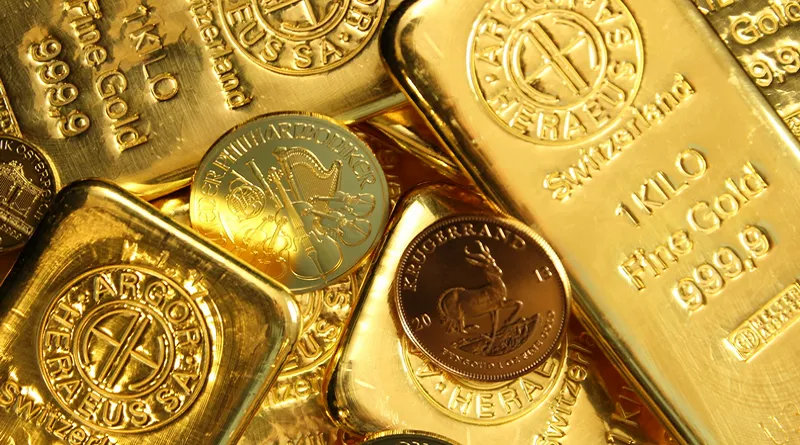Gold has long been a symbol of wealth and luxury, serving various purposes from jewelry to investment. Among the different types of gold, 14K gold stands out due to its balance of quality, durability, and affordability. This article delves into what 14K gold is, its worth by the gram, factors influencing its value, and how it compares to other gold types. By the end, readers will gain a comprehensive understanding of the valuation of 14K gold.
What is 14K Gold?
Definition and Composition
14K gold is an alloy that consists of 58.3% pure gold and 41.7% other metals. The “14K” designation indicates that out of 24 parts, 14 are pure gold. The remaining metals are often copper, silver, or palladium, which enhance the gold’s strength and alter its color.
Composition Breakdown:
Gold: 58.3%
Copper: 35.5%
Silver: 5.5%
Other Metals: 1.7%
Characteristics of 14K Gold
Durability: The presence of other metals makes 14K gold more durable than higher karat golds, making it suitable for everyday wear.
Color Variations: Depending on the alloying metals used, 14K gold can appear in different colors, including yellow, white, and rose gold.
Affordability: 14K gold is often more budget-friendly than 18K or 24K gold, appealing to a wider range of consumers.
Current Market Value of 14K Gold by the Gram
Gold Pricing Basics
The price of gold fluctuates based on market conditions, including supply and demand, geopolitical events, and economic factors. Gold prices are typically quoted per troy ounce, which is approximately 31.1 grams. To find the value of 14K gold, we need to consider the current price of pure gold.
Calculating the Value
Current Gold Price: Check the latest price of 24K gold per gram (e.g., $60).
Purity Factor: Since 14K gold is 58.3% pure, multiply the price of pure gold by 0.583 to find the value of 14K gold per gram.
Example Calculation:
Current price of 24K gold: $60/gram
Value of 14K gold = $60 × 0.583 = $34.98/gram
Market Trends
The price of gold can vary daily. It’s essential to check reputable sources like financial news websites or commodity exchanges to get the latest prices. Historical trends can also provide insights into how the value of 14K gold has changed over time.
Factors Influencing the Value of 14K Gold
Economic Factors
Inflation: As inflation rises, the value of gold often increases, making it a reliable investment.
Interest Rates: Lower interest rates can lead to higher gold prices as people seek tangible assets.
Global Events: Political instability, wars, and economic crises can drive investors toward gold, impacting its value.
Supply and Demand
Mining Production: Changes in gold mining output can affect supply. A decrease in production may lead to higher prices.
Consumer Demand: Trends in jewelry fashion and investment demand also influence gold prices. If more consumers want 14K gold jewelry, the demand can drive up its value.
Quality and Condition
Purity and Alloy Composition: The exact composition of the alloy can slightly affect the value of 14K gold.
Condition of the Item: For jewelry, the condition (e.g., scratched, polished) and craftsmanship can influence resale value.
Comparing 14K Gold with Other Types
14K Gold vs. 18K Gold
Purity: 18K gold contains 75% gold, making it more expensive than 14K gold.
Durability: 14K gold is more durable and less prone to scratches compared to 18K gold.
Price Difference: Typically, 18K gold is worth approximately 25% more than 14K gold due to its higher gold content.
14K Gold vs. 24K Gold
Purity: 24K gold is 99.9% pure gold, making it the most valuable but also the softest and least durable.
Investment Value: 24K gold is often preferred for investment due to its purity, whereas 14K gold is favored for jewelry due to its durability.
Price Comparison: 24K gold is generally significantly more expensive than 14K gold, sometimes double or more, depending on market conditions.
Where to Buy and Sell 14K Gold
Buying 14K Gold
When purchasing 14K gold, consider:
Reputable Jewelers: Look for established jewelers with good reviews and transparent pricing.
Online Retailers: Ensure they have return policies and clear descriptions of the product.
Certification: Ensure that items come with certification of authenticity.
Selling 14K Gold
When selling 14K gold, consider:
Gold Buyers: Look for reputable gold buyers or jewelers that offer fair pricing based on the current market rate.
Gold Parties: Be cautious of gold parties; they may offer lower prices than professional buyers.
Online Platforms: Research online gold selling platforms, ensuring they are credible and secure.
Caring for 14K Gold Jewelry
Maintenance Tips
Regular Cleaning: Clean 14K gold jewelry with warm, soapy water and a soft cloth to maintain its shine.
Avoid Harsh Chemicals: Keep jewelry away from harsh cleaners and chemicals, which can damage the gold.
Proper Storage: Store gold jewelry in a soft pouch or jewelry box to prevent scratches and tangling.
Handling Tips
Limit Exposure: Avoid wearing 14K gold jewelry while swimming or during strenuous activities to prevent damage.
Routine Inspections: Regularly check for loose stones or clasps to ensure the integrity of your jewelry.
Conclusion
14K gold holds a unique place in the world of jewelry and investment due to its balance of purity, durability, and affordability. Understanding its worth by the gram helps consumers make informed decisions when buying or selling. With fluctuations in the gold market influenced by economic conditions and demand, keeping abreast of current prices and trends is essential. Whether you are investing in gold or simply looking for elegant jewelry, 14K gold offers a versatile option that combines beauty with practicality.
Related topics:
- Understanding 24 Carat Gold: Significance and Purity Explained
- 417 Gold: Value, Composition, and Market Insights
- How to Determine If 18K Gold Is Real: A Comprehensive Guide


